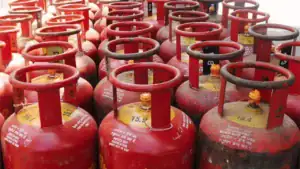A Guide to Car Inspection is a detailed evaluation of your vehicle’s condition—both inside and out—to ensure it is safe, functional, and roadworthy. Whether you’re buying a used vehicle, preparing for a long trip, or maintaining your car, regular inspections are essential. They help prevent costly repairs, improve road safety, and extend your car’s lifespan.
Why Car Inspection Matters
A thorough car inspection offers several key benefits:
- Ensures Road Safety: Identifies potential safety issues like worn brakes or faulty lights before they become hazardous.
- Reduces Repair Costs: Detects problems early, saving you from expensive future repairs.
- Fulfills Legal Requirements: Some regions require safety or emissions inspections for registration renewal.
- Improves Resale Value: A properly maintained and inspected car is more attractive to buyers.
Read More: Funds Delay Islamabad Road Projects
Types of Car Inspections
1. Pre-Purchase Car Inspection
This inspection is done before buying a used vehicle to uncover hidden issues and ensure a fair deal.
2. Routine Maintenance Inspection
Regular checks carried out during scheduled maintenance to track wear and tear on key components.
3. Emissions Inspection
Mandatory in many regions to ensure the vehicle meets environmental emission standards.
4. State Safety Inspection
A government-mandated inspection required in some provinces or countries for legal vehicle registration.
Car Inspection Checklist: What to Check
Exterior Components
- Body Condition: Look for dents, rust, scratches, or mismatched paint that might suggest previous accidents.
- Glass Surfaces: Inspect windshields and windows for chips or cracks.
- Lighting: Check headlights, brake lights, turn signals, and hazard lights for full functionality.
- Tires:
- Tread depth and pattern
- Uneven wear
- Sidewall damage
- Correct air pressure
Interior Inspection
- Seats and Seatbelts: Test for proper seat adjustment and secure, working seatbelts.
- Dashboard: Check that no warning lights are illuminated, such as the check engine or ABS light.
- Electronics and Controls: Test infotainment systems, power windows, mirrors, and climate controls.
- Odometer Reading: Verify that the mileage is consistent with the car’s age and condition.
Under the Hood
- Engine Oil: Should be at the correct level and a healthy amber color.
- Coolant: Ensure the coolant reservoir is filled and fluid is clean.
- Brake Fluid: Should be clear and within the recommended level.
- Battery: Terminals should be clean and voltage should read around 12.6V when the engine is off.
- Belts and Hoses: No cracks, swelling, or fraying should be present.
- Fluid Leaks: Look under the vehicle for signs of oil, coolant, or transmission fluid leaks.
Read More: Rawalpindi Opens Incomplete Flyover
Underbody and Suspension
- Brake System: Inspect pads, discs, and brake lines. Listen for grinding or squeaking.
- Exhaust System: Check for rust, visible holes, or loud noise while running.
- Suspension: The vehicle should sit level and respond smoothly over bumps.
- Steering Alignment: Should not pull to one side; the steering wheel should return to center easily.
Test Drive Evaluation
- Engine Performance: Engine should start smoothly, idle consistently, and accelerate without hesitation.
- Braking Response: Brakes should respond quickly and smoothly without vibration.
- Transmission Function: Gears should shift seamlessly in both automatic and manual transmissions.
- Steering and Handling: Steering should be responsive and precise, with no play or resistance.
Who Should Perform a Car Inspection?
- DIY Inspections: Ideal for basic checks like fluid levels, lights, and tire condition.
- Certified Mechanics: Recommended for thorough inspections, especially before buying or selling a car.
- Authorized Testing Centers: Required for official safety or emissions inspections in some jurisdictions.
How Often Should You Inspect Your Car?
| Vehicle Type | Recommended Frequency |
|---|---|
| New Vehicle | Every 10,000–15,000 kilometers |
| Used Vehicle | Every 6 to 12 months |
| High-Mileage Car | Every 5,000–7,000 kilometers |
| Before Long Trips | At least one week prior to travel |
Conclusion: Make Car Inspection a Routine, Not a Reaction
Car inspections are not just for emergencies or buying used vehicles. They are an essential part of vehicle ownership that ensures safety, reliability, and efficiency. Whether you’re preventing a breakdown or preparing for a sale, a well-conducted inspection helps you stay ahead of issues and drive with confidence. Stay tuned with Bloom Pakistan
Read More: Punjab Takes Major Step to Control Vehicle Emissions









